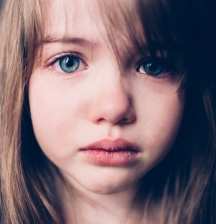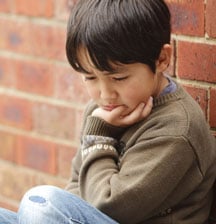
We’re encouraged to stand up to bullying. But that’s often easier said than done. Here are some practical ways to support your child if they are involved with this behaviour.
We all understand what bullying is, right? But did you know that a single act of aggression may not qualify as bullying? According to the official definition, bullying is explained as:
- deliberate (the bully meant to make the other person feel bad)
- repeated over time (not a one-off incident)
- committed by someone with more power (the bully is physically stronger, has a higher social status, knows a secret about the victim, or has a numbers advantage)
- harmful to the victim
In addition to physical violence or violation of space, bullying can be verbal (swearing, name calling, belittling) or social (exclusion from the rest of the group, talking about a party the victim wasn’t invited to, etc.)
And of course, it’s online
Sadly, bullying has gone digital. Cyberbullying includes sending a hate-filled text message, posting an insulting comment on social media or sharing an unflattering video. It can be anything digital that’s aimed at hurting or humiliating another person, and it’s illegal (Harmful Digital Communications Act of 2015).
Signs of bullying
Not everyone who’s being bullied will display warning signs. However, it makes sense to investigate any negative changes in your child, such as:
- physical injuries
- fear or unwillingness to go to school
- real or imaginary headaches or stomach trouble
- lost or damaged possessions
- nightmares or inability to fall asleep
- coming home hungry after school (if their lunch is being stolen)
- loss of friends
- self-harming
- loss of appetite (a sign of depression)
- loss of interest in schoolwork, hobbies, socialising
Is teasing bullying
Our Kiwi culture tends to rely on teasing for humour and affection, so your child will likely get teased at some point. If it’s mutual (done by both children), friendly, and provided both find it funny rather than hurtful, then it’s all right. But if the teasing seems unkind and aimed one way, then it is bullying and needs to stop.
What to do if your child is being bullied
If you notice any of the warning signs, have a low-key conversation with your child. If they confirm your suspicions, stay calm. Make sure they understand the anger you feel for the bully is not directed at them. Praise your child for doing the right thing and telling you, reassure them it’s not their fault, and that you’ll keep them safe. Finally, agree to sort it out together. If your child doesn’t want to talk about it, you may need to get professional help. Your school will have anti-bullying programs, as well as access to a mental health counsellor.
What to do if your child is the bully
It’s painful to realise that your child may be responsible for bullying behaviour. Try to determine what triggered it: your child may have been a victim of a bully (it’s often hurt people who hurt other people), they may feel frustrated or need to feel in control.
Reassure them that you love them and that you want to help by understanding where they’re coming from. A good question may be: “Why did you push Andy?” If there’s no reply, ask: “How did you feel before you pushed him?” and “How did it make you feel afterwards?” A small child might have trouble naming the emotion. You might need to ask whether it made the child happy, sad, angry, scared, confused. If the child said it made them happy to push Andy, ask what about it felt good.
To build empathy, ask how Andy may have felt before and after your child pushed him, and how they would have felt if someone pushed them – this can lead to a discussion about what to do if that were to happen. Remind them it’s important to treat everyone with respect, in other words, the way they would like to be treated.
If the bullying happens in your presence, give attention to the victim, not to your child. Don’t react with violence, because that teaches them that violence is ok, and that people who love them are allowed to hurt them.
How to support additional needs children
Children with additional needs (such as medical conditions, developmental delays, psychiatric conditions, or congenital conditions) are often bullied because they stand out, though they may also become bullies because of feeling ostracised or due to their under-developed communication skills.
If they are the bully, teach them to make better decisions and mechanisms to overcome their frustrations. Unfortunately, however, children with additional needs are more often the victims. In either case, explain what bullying is and why it’s wrong, offering examples of treating others well and treating people unkindly. Ask whether they have their own examples, or whether someone has ever made them sad.
If you think your child may be at risk, ensure they stay close to playground supervisors, and create a “buddy system” to walk them to and from classes.
By Yvonne Walus
More on Bullying from Tots to Teens:








